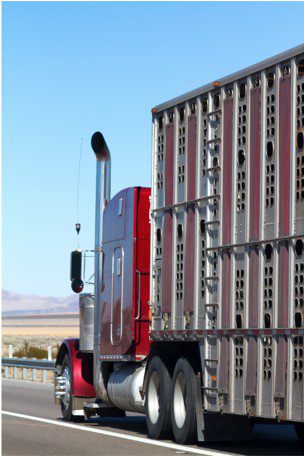
HAULING LIVESTOCK: 3 THINGS TO CONSIDER

There are many different types of freight you can haul as a truck driver, and livestock is one of them. According to the FMCSA, there are roughly 250,000 drivers who are specialty livestock haulers in the U.S. Hauling livestock isn’t for everyone. It takes a special kind of truck driver with patience and who does not mind the smell or getting their hands dirty. Drivers with previous experience in handling livestock make great candidates for livestock drivers. However, drivers without livestock experience can still make great livestock truck drivers. Here are 3 things to consider regarding hauling livestock.
Different Types of Livestock
While cattle make up the largest part of the livestock transportation industry, there are many different types of livestock you can haul. Some common examples of livestock loads are chickens, pigs, goats, and sheep. As a truck driver, you can get the necessary training to haul high-value livestock.
Animal Care
Taking good care of the livestock you are hauling is a huge part of transporting livestock. You will want to be educated on the type of livestock you are hauling so you can provide the best care. Livestock drivers also need to have patience and drive defensively.
Higher Pay
Due to livestock haulers needing specific requirements, they are paid a higher rate for loading and unloading animals. They are also considered a specialty hauler, so the pay is increased, and for good reason. Drivers hauling livestock must maintain additional certifications to show their understanding of the risks involved in hauling animals. Some risks include escaped livestock, injury, or deck collapsing. Drivers will also have to acquire a specific type of trailer depending on the animals hauled.
Livestock haulers need to also consider the biosecurity involved with transporting animals. If your livestock trailer is not frequently cleaned and disinfected after each load, animals can become infected by the following:
- Feces, blood, and urine
- Feed and water containers
- Insects and parasites
- Live bacteria or viruses on surfaces
Livestock haulers must be aware of the transmission risks from delivery site to delivery site.




